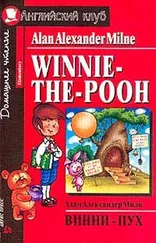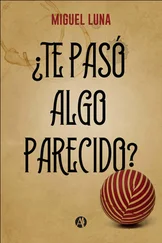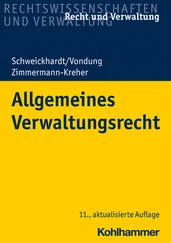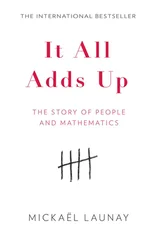The surveyors adopted a different method, which was subtler and more practical: they used their rope directly to form a triangle with a right angle (known as a right-angled triangle). The most famous one is the 3–4–5. If you take a rope divided into twelve intervals by thirteen knots, then you can form a triangle whose sides measure three, four and five intervals, respectively. And, as if by magic, the angle formed by the sides of length 3 and 4 is a perfect right angle.
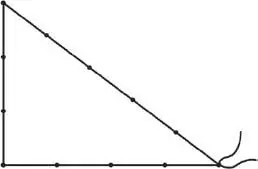
Four thousand years ago, the Babylonians already had tables of numbers that could be used to construct right-angled triangles. The Plimpton 322 Tablet, which is currently in the collections of Columbia University in New York City, and dates from 1800 BC, contains a table of fifteen triples of such numbers (so-called Pythagorean triples). Apart from the 3-4-5, it has fourteen other triangles, some of which are considerably more complicated, such as the 65-72-97 or even the 1,679-2,400-2,929. Up to a few minor mistakes, such as errors in calculation or transcription, the triangles of the Plimpton Tablet are perfectly exact, and they all have a right angle.
It is difficult to know the precise period from which the Babylonian surveyors began to use their knowledge of right-angled triangles on the ground, but the use of these triangles persisted well beyond the disappearance of the Babylonian civilization. In the Middle Ages, for example, the rope with thirteen knots remained an essential tool for cathedral builders.
On our journey through the history of mathematics, it is by no means uncommon to find certain similar ideas appearing independently at removes of thousands of kilometres and in profoundly different cultural contexts. One such startling coincidence is that during the first millennium BC the Chinese civilization developed a whole mathematical know-how that corresponds remarkably to that of the Babylonian, Egyptian and Greek civilizations of the same period.
This knowledge was amassed over the centuries before being compiled under the Han dynasty, around 2,200 years ago, into one of the world’s first great mathematical works: The Nine Chapters on the Mathematical Art .
The first of these Nine Chapters is entirely devoted to the study of measurements of fields of various shapes. Rectangles, triangles, trapezia, circles, portions of circles and also rings represent geometric figures for which procedures for calculating their areas are described in minute detail. Later in the work, you discover that the ninth and final chapter deals with right-angled triangles. And guess which figure is discussed from the very first sentence of this chapter: the 3-4-5!
Good ideas are like that. They transcend cultural differences and are able to blossom spontaneously wherever human minds are ready to devise and absorb them.
SOME PROBLEMS OF THE PERIOD
Questions about fields, about architecture, or more generally about land planning led the scholars of antiquity to set themselves a great diversity of geometric problems of which the following are examples.
The following statement, taken from the Babylonian Tablet BM 85200, shows that the Babylonians were not content with plane geometry, but also thought in the space dimension.
An excavation. So much as the length, that is the depth. 1 the earth I have torn out. My ground and the earth I have accumulated, 1 ´ 10. Length and width: '50. Length and width, what? 1
As you will have gathered, the style of the mathematicians of Babylon was telegraphic in nature. If we expand it further, this same statement might look as follows:
The depth of an excavation is twelve times greater than its length. 2 If i dig further so that my excavation has one more unit of depth, then its volume will be equal to 7/6. If i add the length to the width i obtain 5/6. 3 What are the dimensions of the excavation?
This problem was accompanied by the detailed method for solving it, ending with the solution: the length is ½, the width ⅓ and the depth 6.
Let’s now take a short trip down the Nile. As a matter of course, in the case of the Egyptians, we find problems about pyramids. The following statement is an extract from a famous papyrus, the Rhind papyrus, copied by the scribe Ahmes, dating from the first half of the sixteenth century BC.
A pyramid has a base side of 140 cubits and an inclination 4 of 5 palms and 1 digit, what is its altitude?’
The cubit, the palm and the digit were units of measurement of 52.5 centimetres, 7.5 centimetres and 1.88 centimetres, respectively. Ahmes also gave the solution: 93 + ⅓ cubits. In this same papyrus, the scribe also took on the geometry of the circle.
Example of the calculation of a round field with a diameter of 9 khet . What is the value of its area?
The khet is also a unit of measurement representing approximately 52.5 metres. To solve this problem, Ahmes stated that the area of this circular field is equal to that of a square field with a side of length 8 khet . The comparison is extremely useful, for it is much easier to calculate the area of a square than that of a circle. His solution was 8 × 8 = 64. However, the mathematicians who succeeded Ahmes came to discover that his result was not quite exact. The areas of the circle and the square do not quite agree. Since then, many people have attempted to answer the question: how do you construct a square with an area equal to that of a given circle? Many have worn themselves out in vain in this pursuit, but for a reason. Without knowing it, Ahmes was one of the first to tackle what would become one of history’s classic mathematical conundrums: the squaring of the circle.
In China too, people sought to calculate the area of circular fields. The following problem is taken from the first of the Nine Chapters .
Suppose one has a circular field with circumference 30 bu and diameter 10 bu . The question is how big is the field? 5
Here, a bu is equal to about 1.4 metres. And, as in Egypt, the mathematicians kept tripping over the rug with this figure. The original statement was already known to be false, since a circle of diameter 10 has a circumference slightly greater than 30. However, that did not prevent Chinese scholars from putting an approximate value on the area (75 bu ), or from complicating the task further for themselves by continuing on to questions about circular rings!
Suppose one has a field in the shape of a ring with internal circumference 92 bu , external circumference 122 bu , and transverse diameter 5 bu . The question is: how big is the field?
It seems likely that there were never any ring-shaped fields in ancient China – these latter problems suggest that the scholars of the Central Kingdom were into geometry and raised these questions as purely theoretical challenges. Research into ever more improbable and weird-looking geometric figures in order to study and understand them remains a favourite pastime of our mathematicians to this day.
Among the ranks of professional geometers, one must also include the Bematists. While it was the job of surveyors and other ropestretchers to measure fields and buildings, the Bematists had a much grander view of things. In Greece, it was the job of these men to measure long distances by counting their steps.
And sometimes their work could take them a long way from home. For example, in the fourth century BC, Alexander the Great took several Bematists with him on his campaign in Asia, which led him as far as the boundaries of what is now India. These walking geometers thus had to measure routes of several thousand kilometres in length.
Читать дальше


